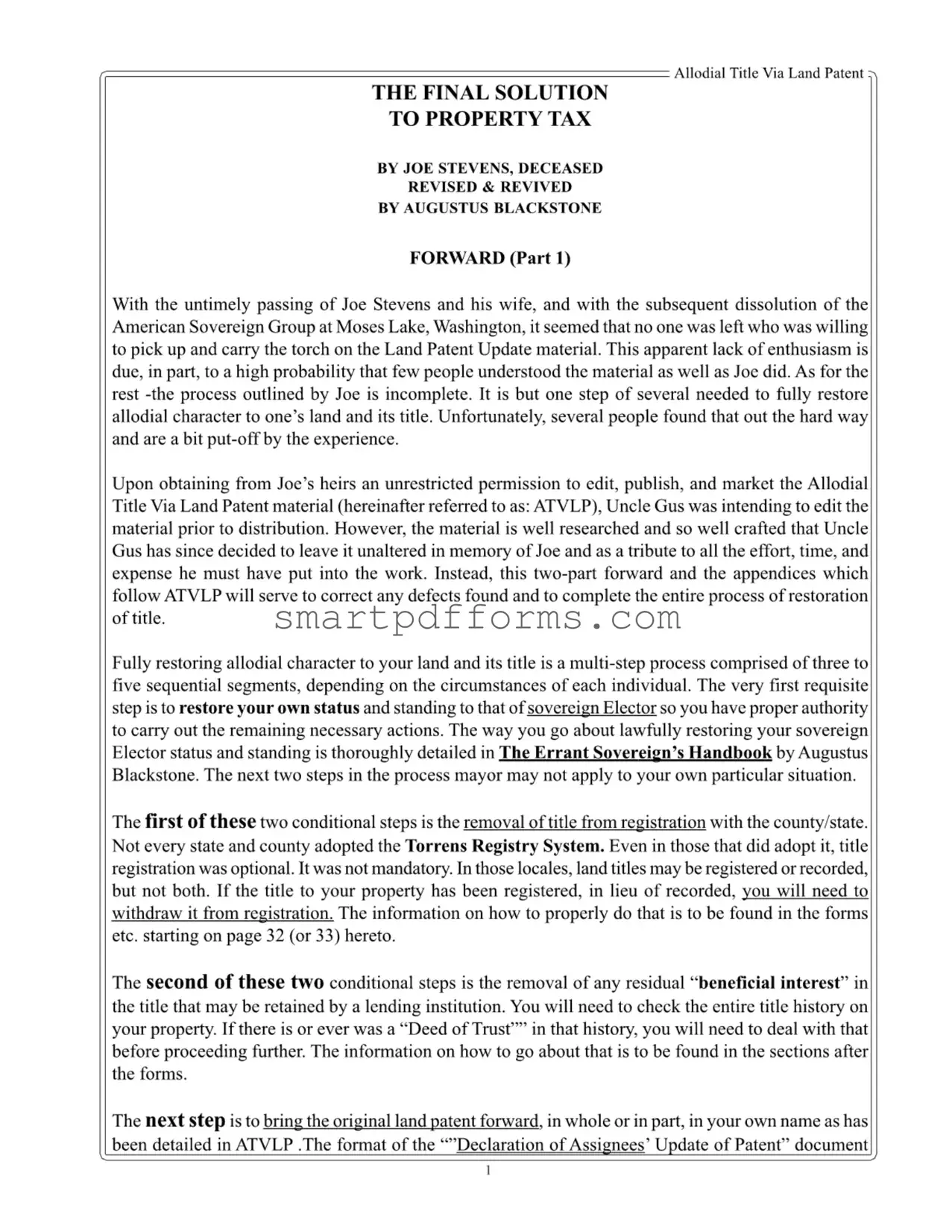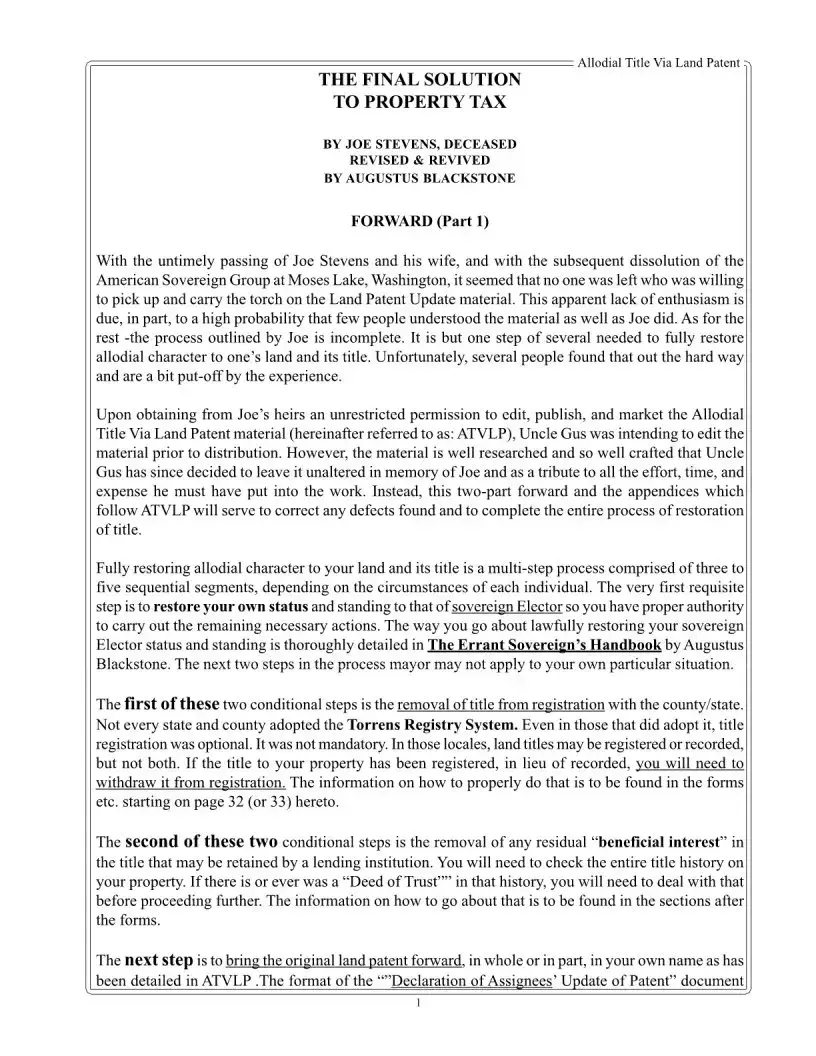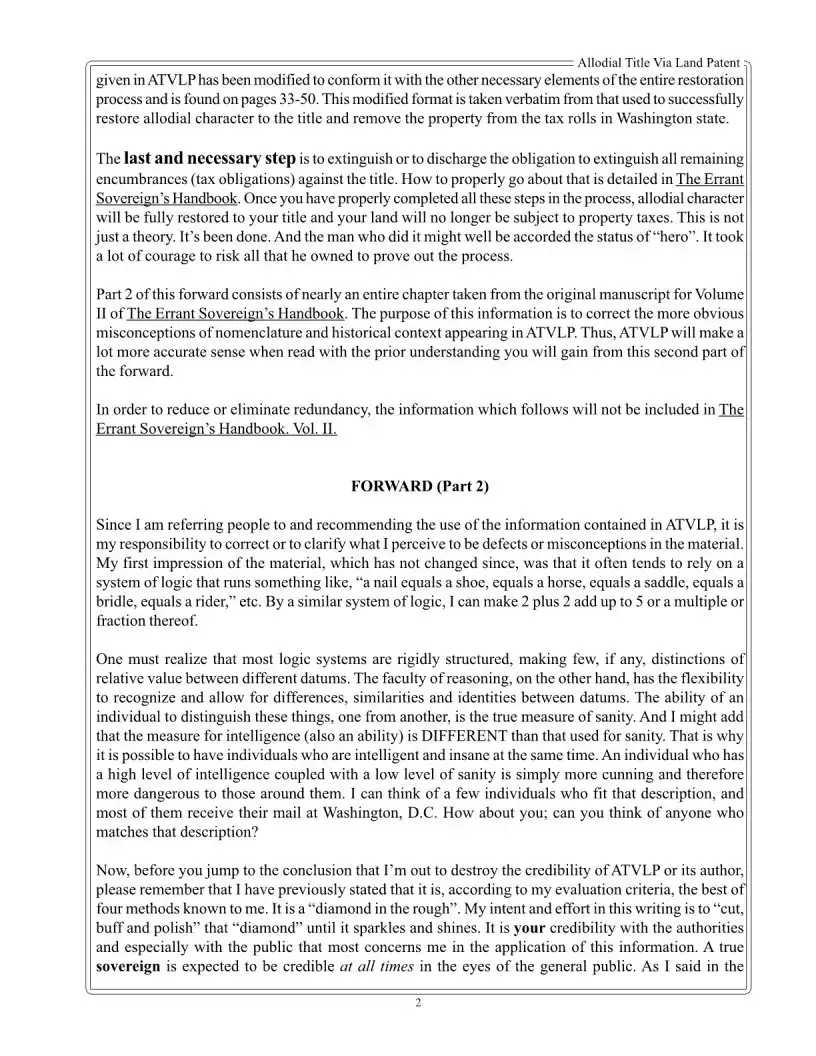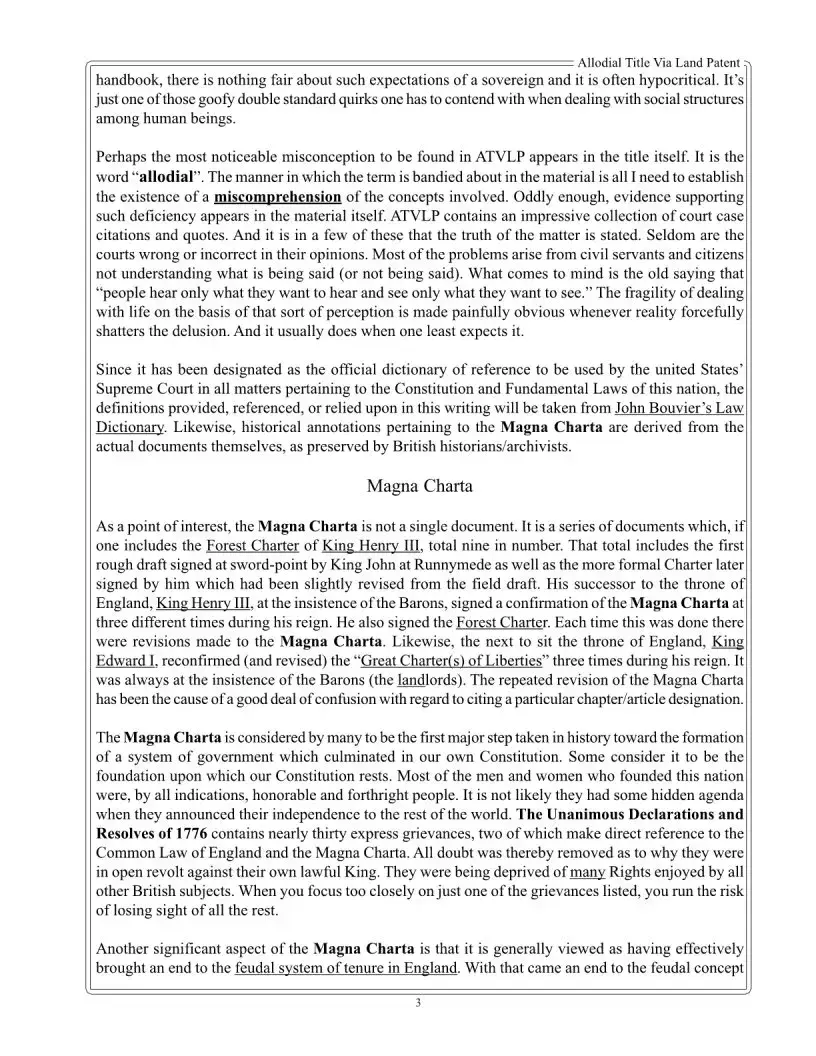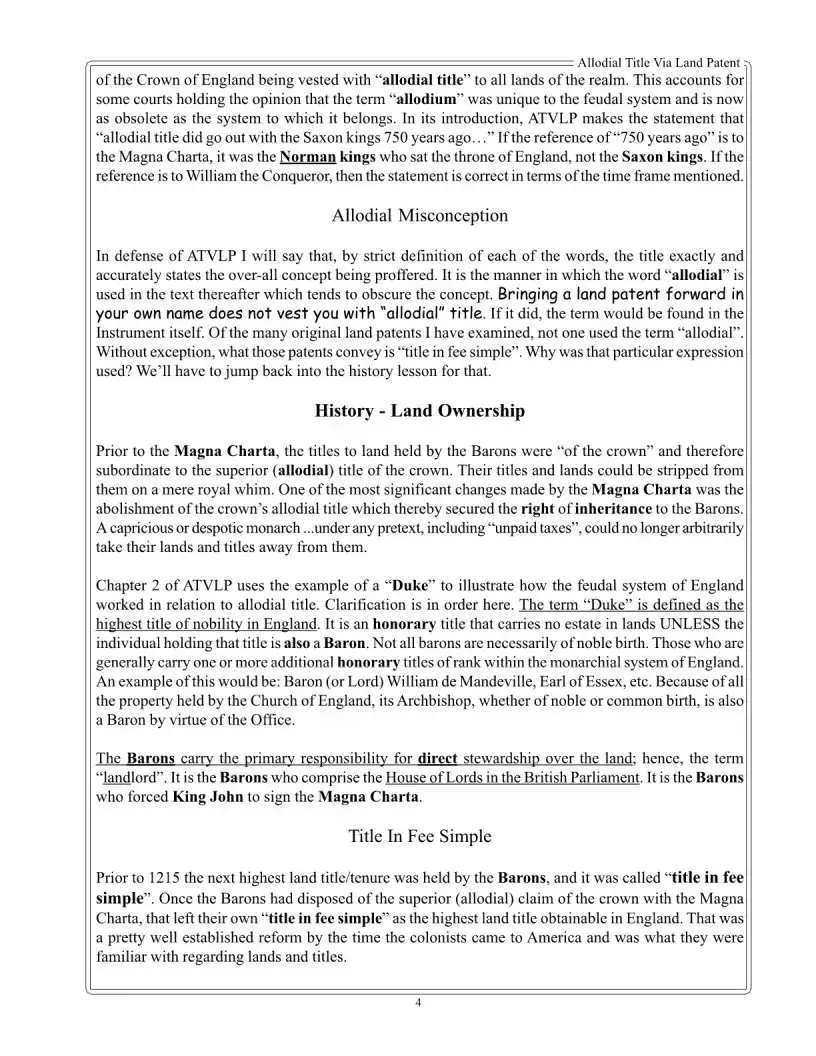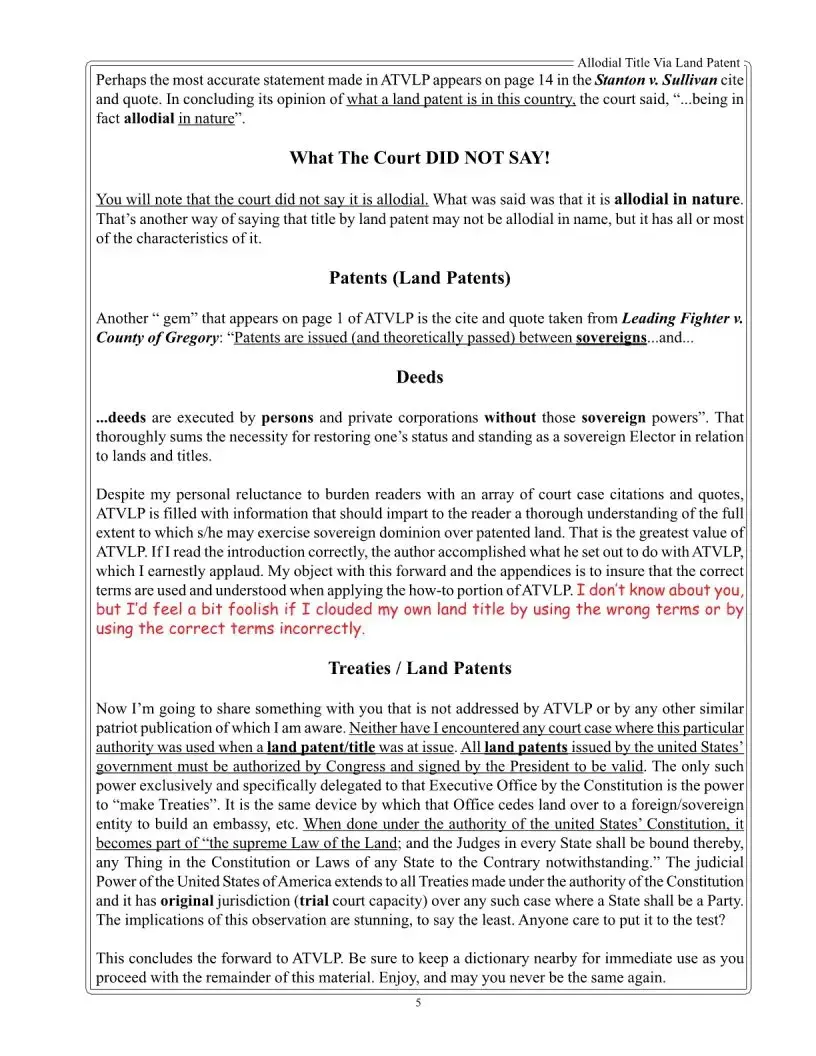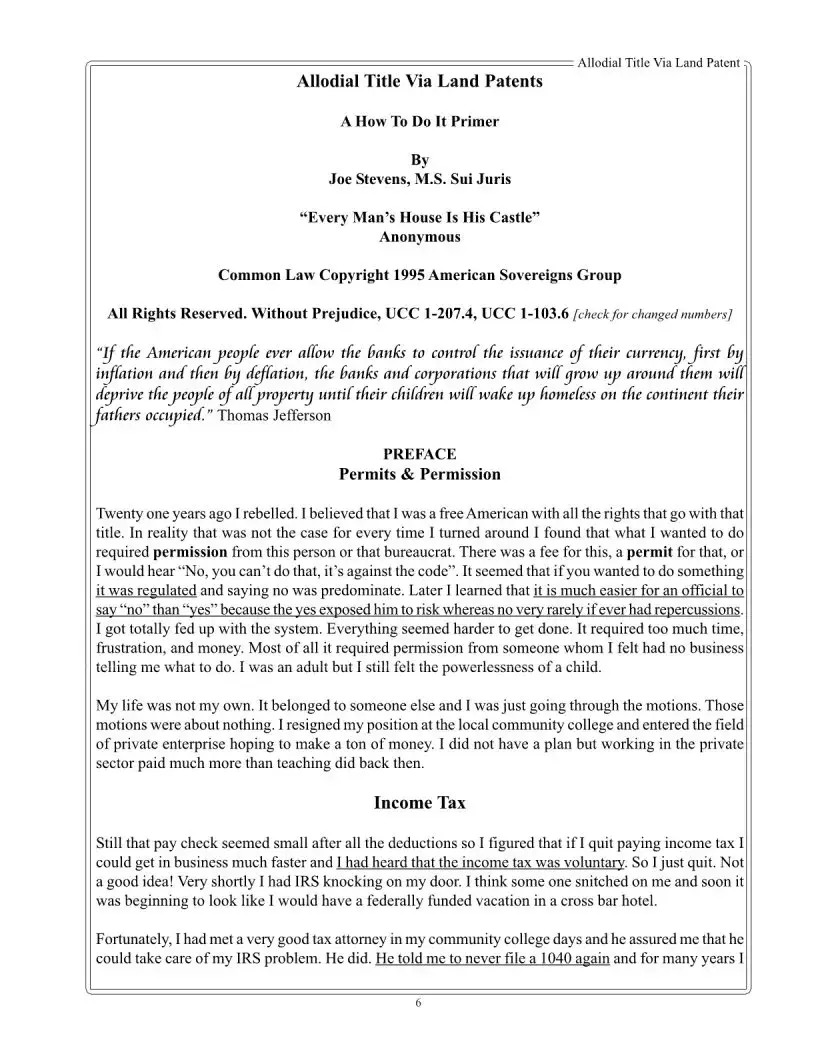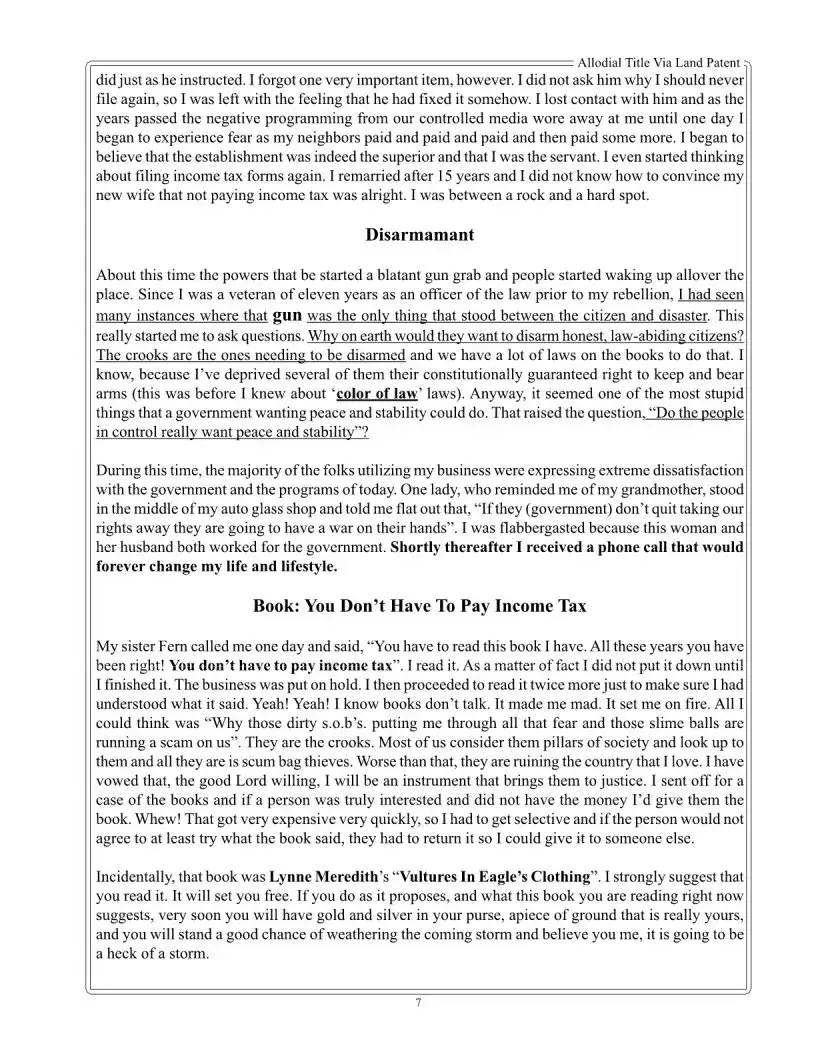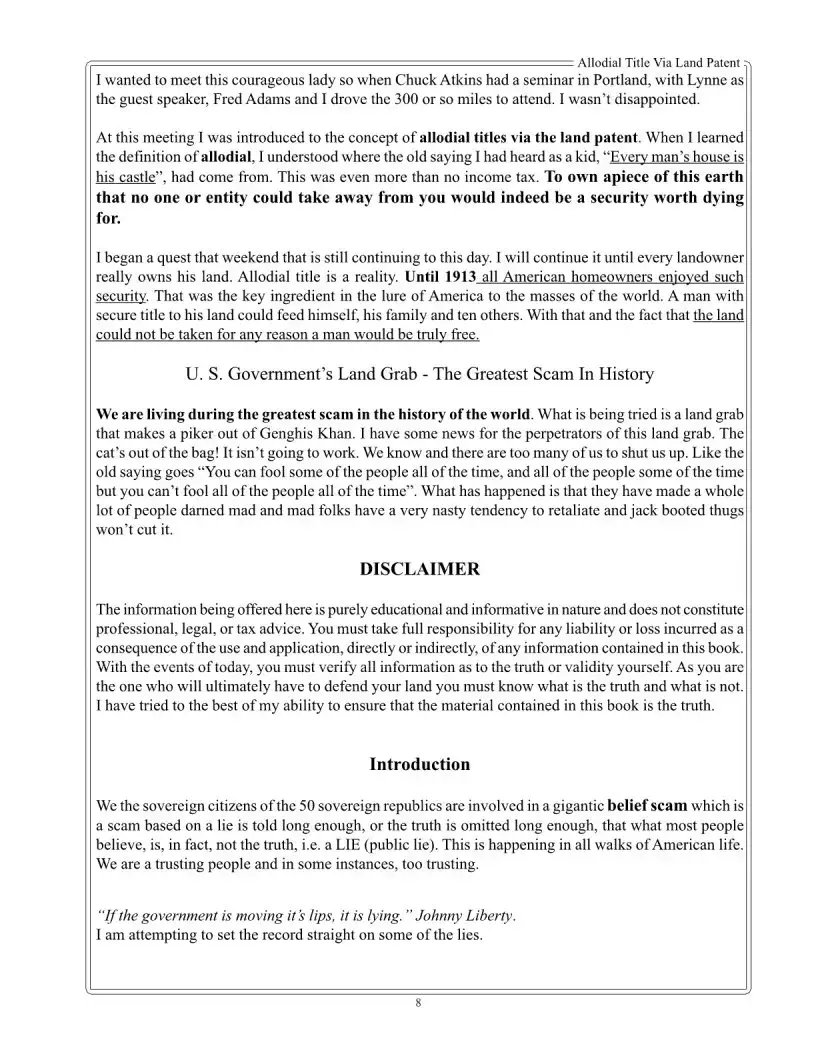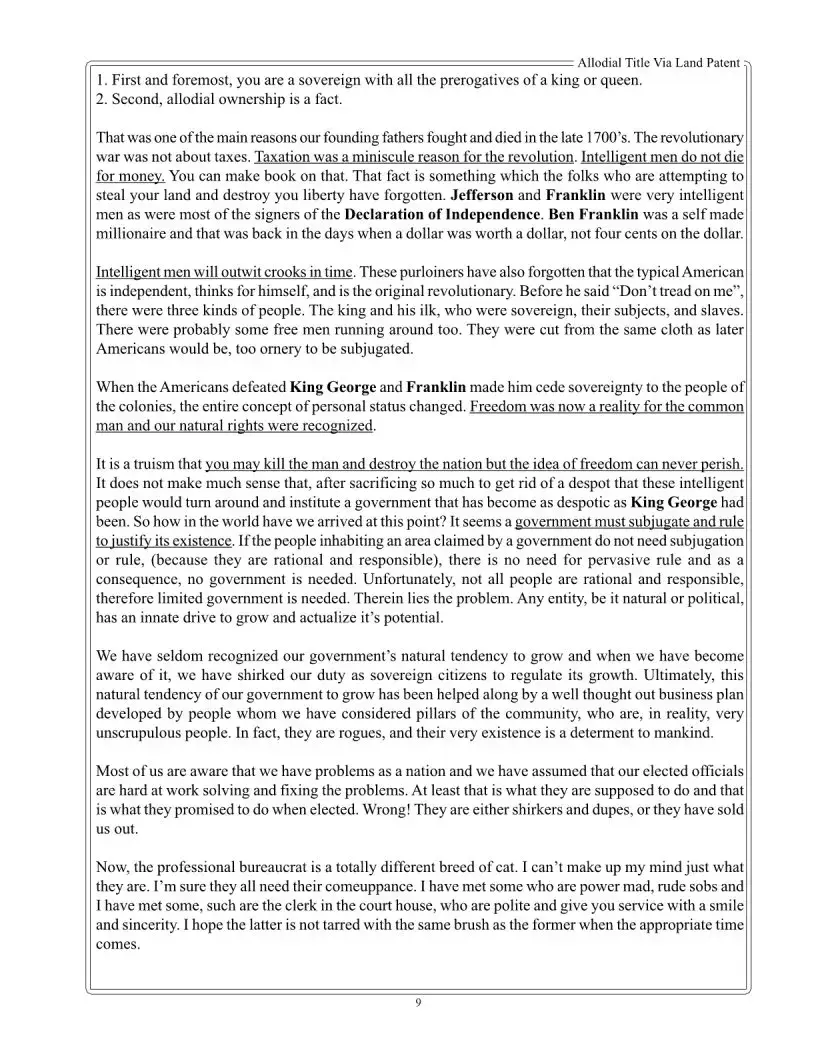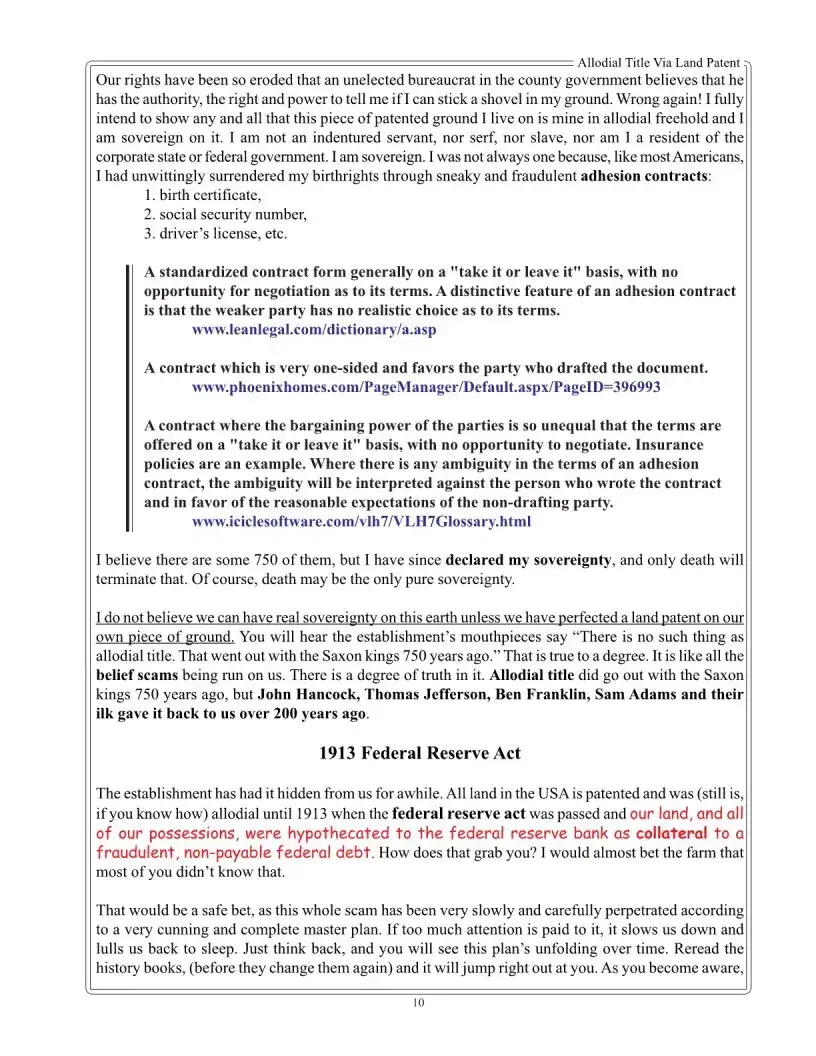In the wake of Joe Stevens' passing and the dissolution of the American Sovereign Group, the quest for a full understanding and implementation of Allodial Title Via Land Patent seemed to stall. This concept, deeply intertwined with the pursuit of property rights free from government taxation, is complex and multifaceted. As detailed in the revived and revised work by Augustus Blackstone, the journey toward restoring allodial character to one's land involves a sequence of carefully articulated steps, beginning with reclaiming one's status as a sovereign elector. The process also encompasses the removal of a property's title from registration systems that many might not even realize their land titles are a part of, and the extinguishing of any residual interests a lending institution might hold. Furthermore, the crucial action of bringing the original land patent forward in one's name is detailed, underscoring the specialized knowledge required to navigate these waters effectively. This guide not only aims to correct previous misconceptions but also to offer a comprehensive roadmap for those determined to fully restore allodial title to their land, thereby removing it from property tax obligations. Through a detailed exposition of both the theory and practical steps involved, including addressing potential mise understandings as seen through inaccurate nomenclature and historical context, the document serves as a beacon for those seeking to undertake this formidable challenge. Ultimately, it transcends its role as a mere guide, embodying a tribute to persistence, detailed research, and the indomitable spirit of those who dare to challenge the status quo.
